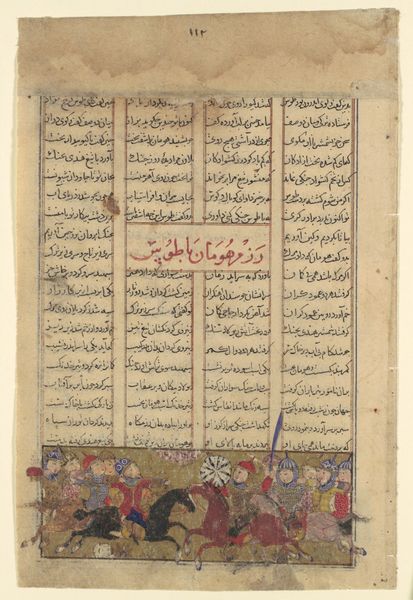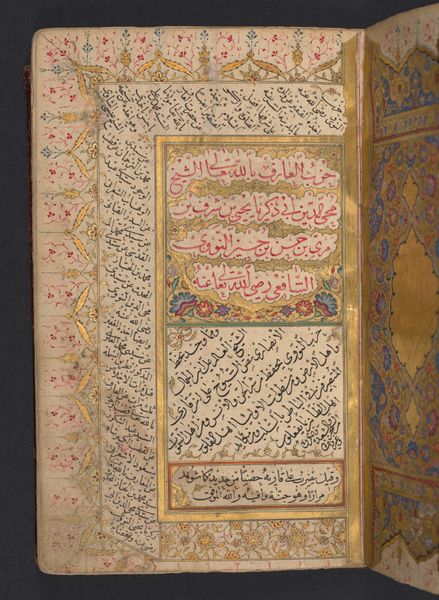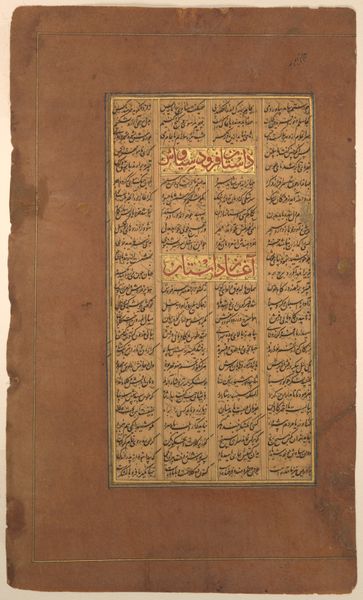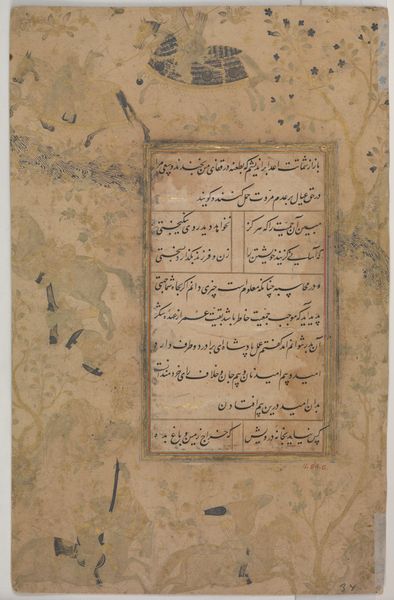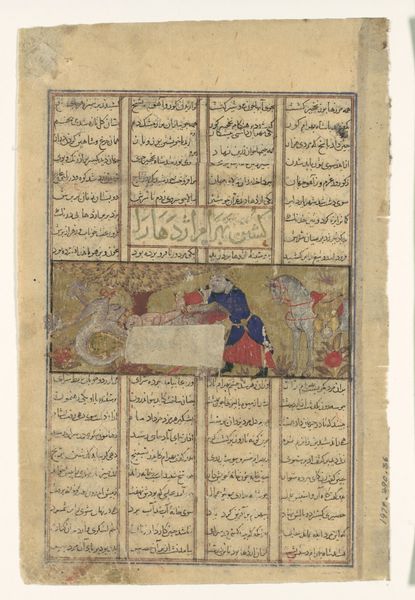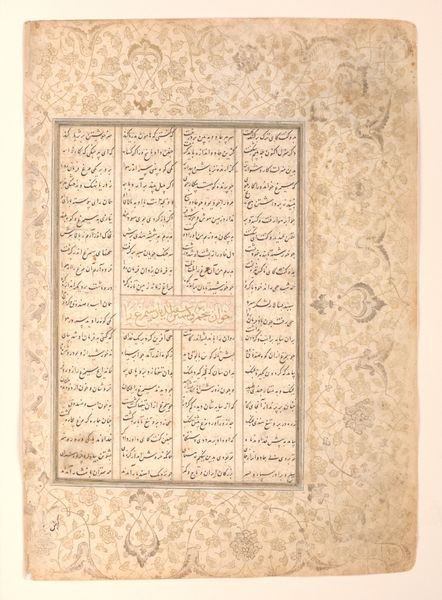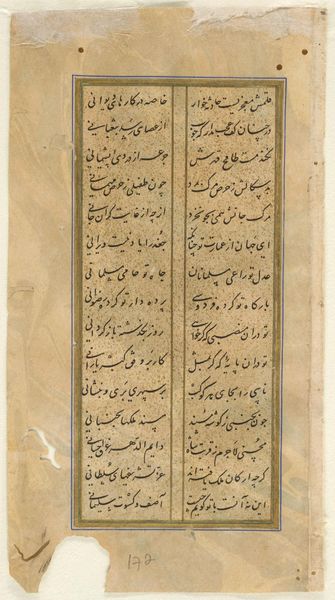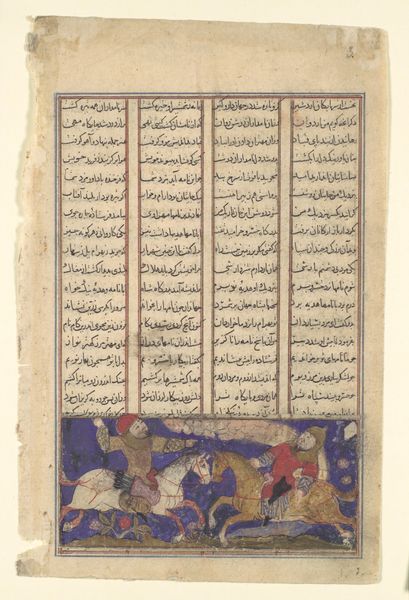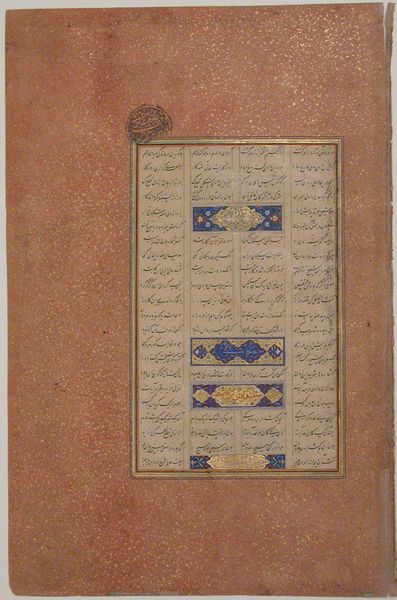
"Rustam Lassos the Khaqan of Chin, Pulling him from his White Elephant", Folio from a Shahnama (Book of Kings) 1305 - 1365
0:00
0:00
painting, watercolor
#
water colours
#
narrative-art
#
painting
#
landscape
#
figuration
#
watercolor
#
horse
#
men
#
islamic-art
#
miniature
#
watercolor
Dimensions: Page: H. 8 1/16 in. (20.5 cm) W. 5 1/4 in. (13.3 cm) Painting: H. 1 7/16 in. (3.7 cm) W. 4 3/16 in. (10.6 cm)
Copyright: Public Domain
Editor: We are looking at "Rustam Lassos the Khaqan of Chin, Pulling him from his White Elephant", a painting from a Shahnama, or Book of Kings, created sometime between 1305 and 1365. I'm really struck by the energy in this little picture, the chaos of the battle contrasted against the very precise text surrounding it. What jumps out at you when you look at it? Curator: Ah, what leaps out! This isn’t just paint on paper, my dear Editor, but a vibrant clash of cultures, literally! Can't you almost hear the thunder of hooves and the clash of steel? What a delicious dance of power, really. A lassoed king? It smacks of utter humiliation but notice how regally the Khaqan still sits his doomed, trembling elephant? There’s pride there. Foolish, perhaps, but pride nonetheless. And look at Rustam—such force concentrated in one figure. The vibrant colours and meticulous detail draw you in but it is the story telling that really thrills the soul, wouldn't you agree? Editor: Absolutely! The colors are so vivid, and there's so much movement packed into this small space. The artist is definitely trying to immerse us into the conflict. Are there any clues, things we should particularly pay attention to when understanding who the artist was speaking to at the time? Curator: I wonder, are you sensing, perhaps, the artist placing the Iranian hero, Rustam, on the visual foreground? Placing a potent marker to cement the supremacy and cultural memory in favour of the patron? What better than immortalising heroes defeating their enemies and be showered with gold? Who doesn't like being associated with eternal strength? Do these details influence your views on art making of the period, as propaganda? Or simply artistic expression of self/national identity? Editor: It is very insightful how powerful symbols create heroes. I initially looked at it only from an artistic perspective, the beauty of miniature painting, and the energy within the image. But thinking about its intention to inspire certain ideologies changes how I view it now. Curator: Precisely! Now you're peeling back the layers of history and narrative intertwined with pigment and paper. Wonderful!
Comments
No comments
Be the first to comment and join the conversation on the ultimate creative platform.

